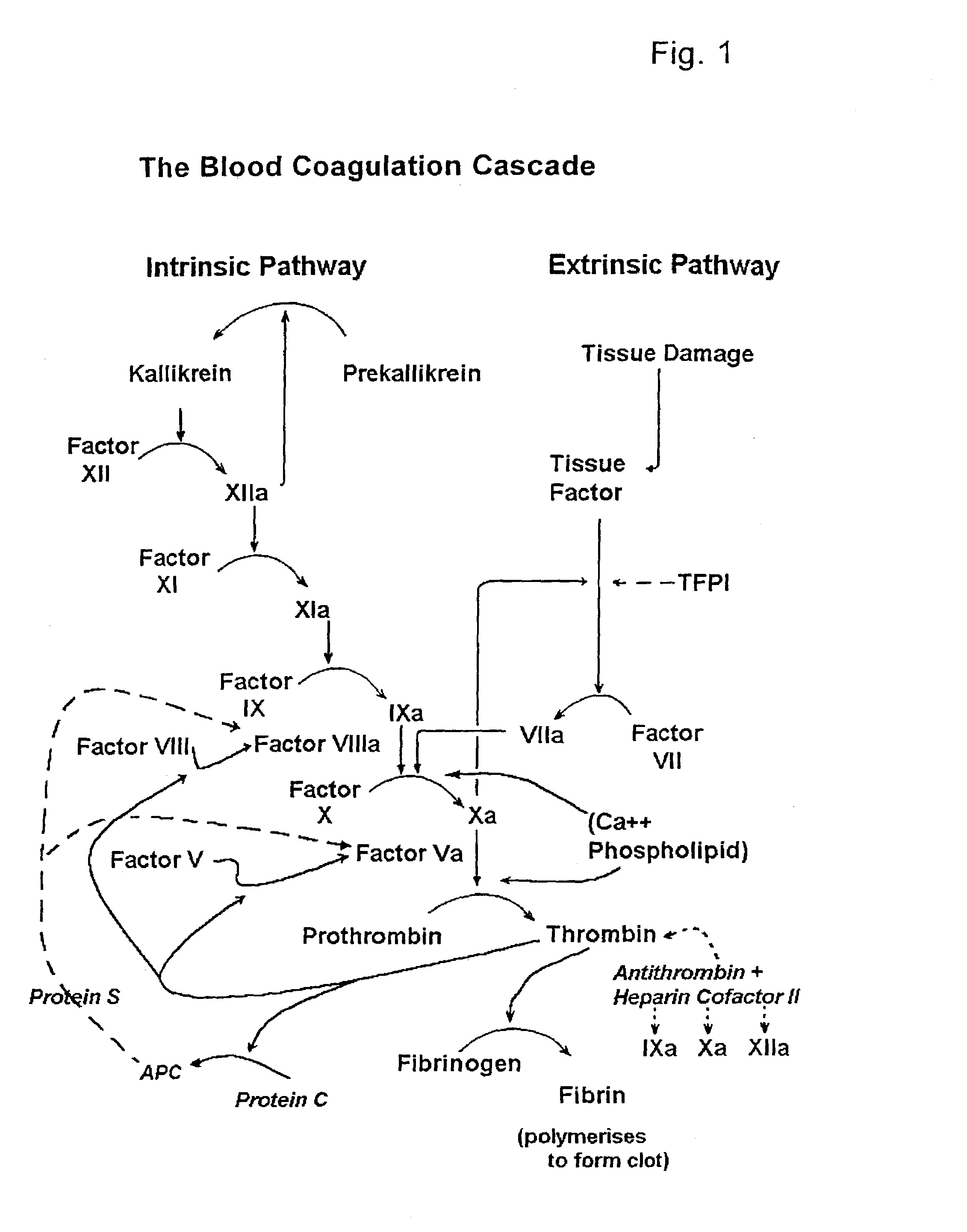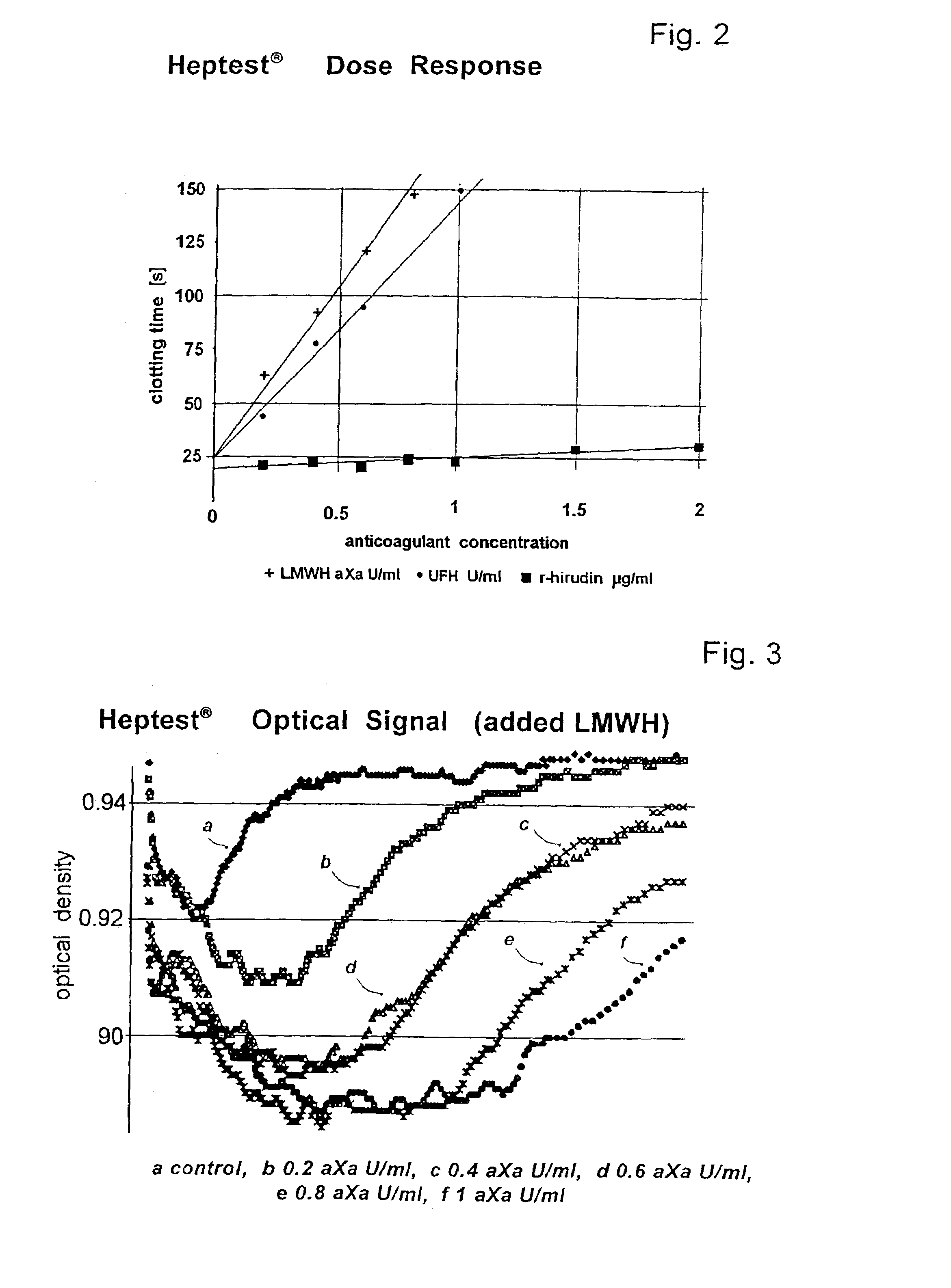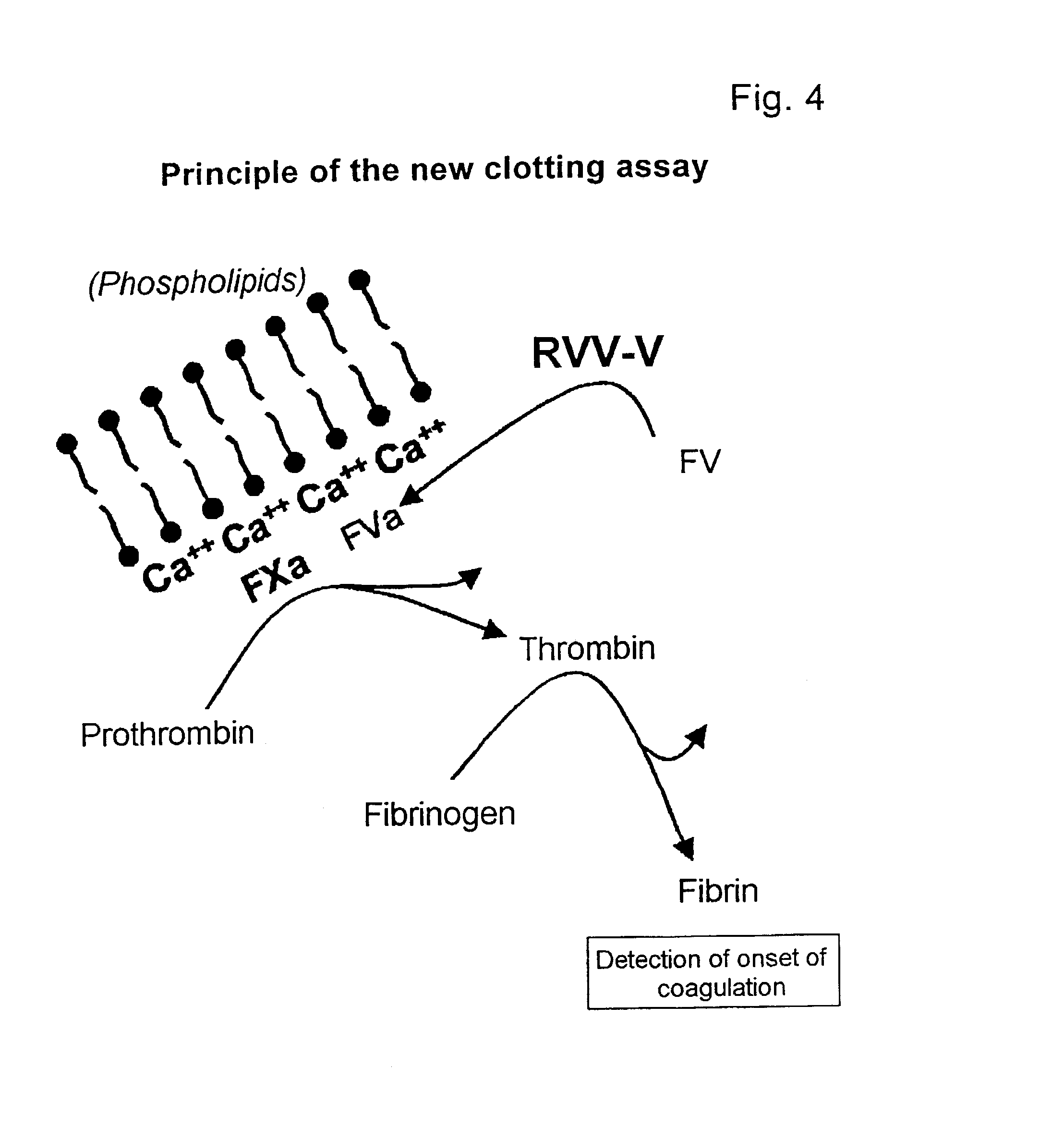Hematological assay
a technology of hematological assay and coagulation factor, which is applied in the field of hematological assay, can solve the problems of impaired coagulation activity of blood, coagulation and clotting, and substances of animal origin can interfere with coagulation factors, so as to reduce the influence of matrix effects, minimize the dependency of plasma coagulation factors, and enhance the specificity of non-heparin anticoagulants
- Summary
- Abstract
- Description
- Claims
- Application Information
AI Technical Summary
Benefits of technology
Problems solved by technology
Method used
Image
Examples
example 1
Preparation of the Activation Reagent
[0120]An activator reagent was prepared having the following composition:
[0121]
NaCl in aqueous solution0.9% w / vTris / HCl buffer, pH 7.4150 mMalbumin20.5% w / vfactor Xa (FXa)30.4 nkat / mlRussell's Viper venom factor V activator (RVV-V)44 U / mlphospholipids550 μg / ml
Assay Procedure
[0122]50 μl citrated, platelet-poor plasma were mixed with 50 μl of the activator reagent and various amounts of the anti-clotting agents LMWH6, UFH7 and r-hirudin8 to form test samples. The samples were incubated for 180 seconds at 37° C. 50 μl of 25 mM CaCl2 solution were then added to each sample and the time to clotting measured on a BCS (Dade-Behring) optical coagulometer. The results in terms of anti-coagulant concentration are shown in FIG. 5.
[0123]Comparison of FIG. 5 with FIG. 2 shows a great improvement in sensitivity (approaching a factor of 2) over the Heptest®. By contrast to the Heptest® the inventive assay is also very sensitive for hirudin.
[0124]The optical sig...
example 2
Variation of Factor Xa Concentration
[0134]It was unexpectedly found that by varying the added factor Xa concentration, the sensitivity of the activation procedure could be adjusted over a wide range.
Procedure
[0135]The procedure of Example 1 was followed with the exception that activating reagents with different concentrations of factor Xa (FXa) from 0.1 to 1.6 nkat / ml were prepared and test samples prepared with 0, 0.5 and 1 U / ml of LMWH. The results are shown in FIG. 7. It can be seen that unexpectedly good signals were obtained even with reduced concentration of factor Xa and a stable base line achieved even with heparinised samples.
[0136]This discovery enables assays to be designed for a broad spectrum of unknown anti-coagulant concentrations, and a variety of different applications are possible, including:
a) Assays for factor Xa and thrombin inactivation by the assessment of thrombin activity using substrates (e.g. chromogenic substrates) which give detectable signals for thromb...
example 3
Variation of the Incubation Period
[0137]It was also found that performing the activation procedure without an incubation step leads to a very extended measuring range, especially for unfractionated heparin, which is useful in assessing high anticoagulant concentrations.
Preparation of the Activation Reagent
[0138]The activator reagent of Example 1 was diluted with an equal volume of 0.025 M calcium chloride solution to produce a reagent having the following composition:
[0139]
NaCl in aqueous solution0.45% w / vTris / HCl buffer25 mM (pH 7.4)albumin0.25% w / vfactor Xa (FXa)0.2 nkat / mlRussell's Viper venom factor V activator (RVV-V)2 U / mlphospholipids25 μg / mlCaCl212.5 mM
Procedure
[0140]50 μl test samples of citrated platelet-poor plasma containing varying amounts of LMWH, UFH and r-hirudin were mixed with 100 μl activator reagent and the time to onset of clotting measured as in Example 1. The results shown in FIG. 8 demonstrate a broad measuring range with particularly good results for UFH.
PUM
 Login to View More
Login to View More Abstract
Description
Claims
Application Information
 Login to View More
Login to View More - R&D
- Intellectual Property
- Life Sciences
- Materials
- Tech Scout
- Unparalleled Data Quality
- Higher Quality Content
- 60% Fewer Hallucinations
Browse by: Latest US Patents, China's latest patents, Technical Efficacy Thesaurus, Application Domain, Technology Topic, Popular Technical Reports.
© 2025 PatSnap. All rights reserved.Legal|Privacy policy|Modern Slavery Act Transparency Statement|Sitemap|About US| Contact US: help@patsnap.com



